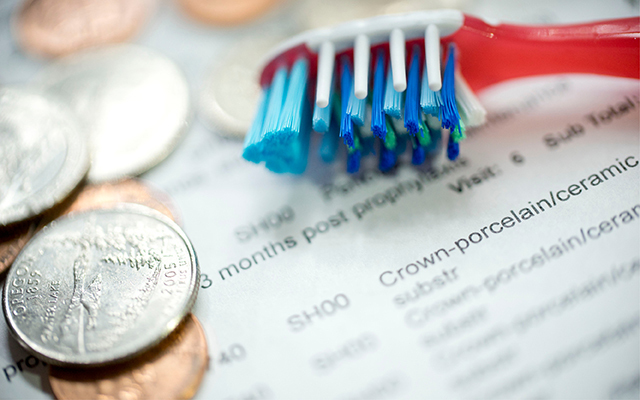It’s an article of faith among the senior set that once you qualify for Medicare your health insurance worries are over. Sure, there’s the matter of supplemental coverage for outpatient services and drugs, but the fear that some catastrophic disease is going to fling you into bankruptcy tends to dissipate when that little red card arrives in the mail.
There’s a catch, though. Medicare doesn’t cover dental work. And folks without dental insurance tend to avoid the dentist; only 27 percent got a check-up during the previous year, according to a recent Johns Hopkins University analysis of 2012 Medicare data. With an estimated 49 million uninsured geezers, that’s a lot of untreated teeth and gums. And it’s triggered a serious oral-health crisis among the elderly.
A quarter of all Americans over the age of 75 are toothless, and one in five over 65 have untreated cavities, according to the National Center for Health Statistics. This trend has ramifications that extend beyond personal aesthetics: Gum disease and other oral bacterial conditions can lead to pneumonia, as well as diabetes, heart attacks, and stroke.
“More than a million people a year go to emergency rooms with dental problems,” says Mary Otto, author of Teeth: The Story of Beauty, Inequality, and the Struggle for Oral Health in America, in a recent Atlantic interview. “Not like they’ve had a car accident, but like a toothache or some kind of problem you could treat in a dental office. It costs the system more than a billion dollars a year for these visits.”
These patients typically won’t find a dentist in those emergency rooms, Otto notes. “The patient gets maybe a prescription for an antibiotic and a pain medicine and is told to go visit his or her dentist. But a lot of these patients don’t have dentists.”
Or if they do, they can’t afford the prescribed treatment. Johns Hopkins researchers found that high-income Medicare beneficiaries were about three times more likely than their low-income counterparts to see their dentist in the previous year. Almost three-quarters of low-income beneficiaries reported receiving no dental care.
“With fewer and fewer retiree health plans covering dental benefits, we are ushering in a population of people with less coverage and who are less likely to routinely see a dentist,” says study author Amber Willink, PhD, an assistant scientist in the Department of Health Policy and Management. “We need to think about cost-effective solutions to this problem.”
Willink and her team evaluated two approaches to the problem: One would add a supplemental dental benefit to Medicare, similar to the Part D drug plan (at an average cost of $29 per month); the other would make dental treatments part of Medicare’s core plan (at a cost of $7 per month). Each of these would cover the cost of an annual dentist visit for preventive care plus 50 percent of the cost for additional treatment, up to $1,500 a year. Lawmakers introduced the latter proposal in Congress last year without success; the odds have not improved under the current regime.
Other approaches have met with mixed results, partly due to the organized opposition of dentists. Otto describes efforts to place dental hygienists in federally funded health clinics serving low-income people and “health navigators” in emergency rooms to assist and advise patients who arrive there with tooth problems. But dentists fiercely protect their territory and have successfully lobbied in many states to limit the level of treatment hygienists can legally provide.
When a lone hygienist named Tammi Byrd organized a group of her colleagues and proposed legislation that would allow them to treat some of the quarter-million children in rural South Carolina who lack access to a dentist, the state dental association fought back.
“They got an emergency regulation passed to stop her from doing her work,” Otto says. “Finally, the Federal Trade Commission came in and took her case and won it for her, in the interest of getting economical preventive care to all these children who lacked it.”
Part of the problem, Otto notes, is that cosmetic dentistry is so much more profitable than preventive care. And low-income people can’t afford a smile upgrade. “One dentist I talked to as I was working on this project said, ‘Nobody wants to do the low-end stuff anymore.’” And yet, they don’t want their hygienists doing it either, despite what Otto calls “this vast need for just basic care. A third of the country faces barriers in getting just the most routine preventive and restorative procedures that can keep people healthy.”
I happen to be one of the lucky ones, so when I climb into the dentist’s chair next week for my quarterly cleaning (receding gums require extra care), I won’t need to worry that the Medicare card in my wallet is powerless to cover the cost. There are plenty of other geezers, though, who would welcome any help they can get.

This Post Has 0 Comments